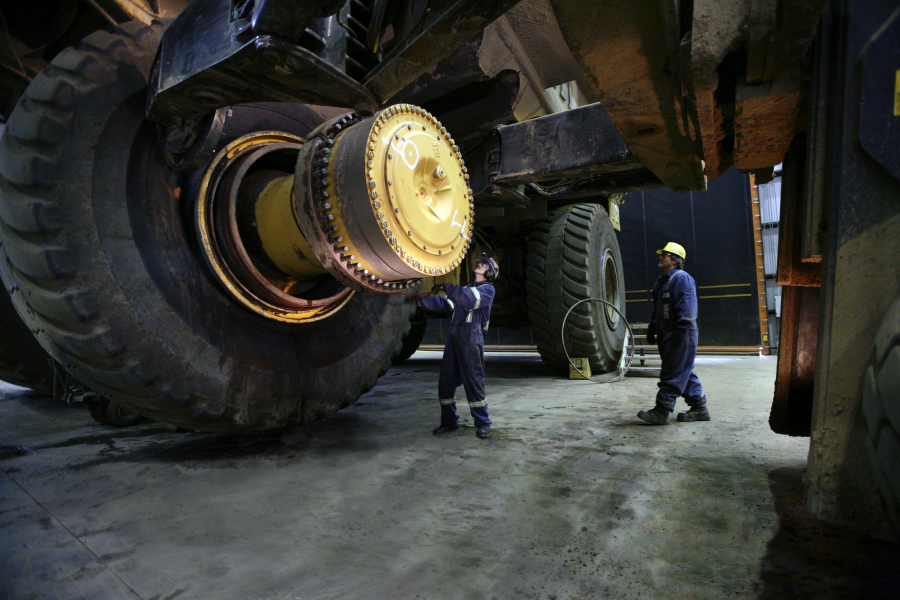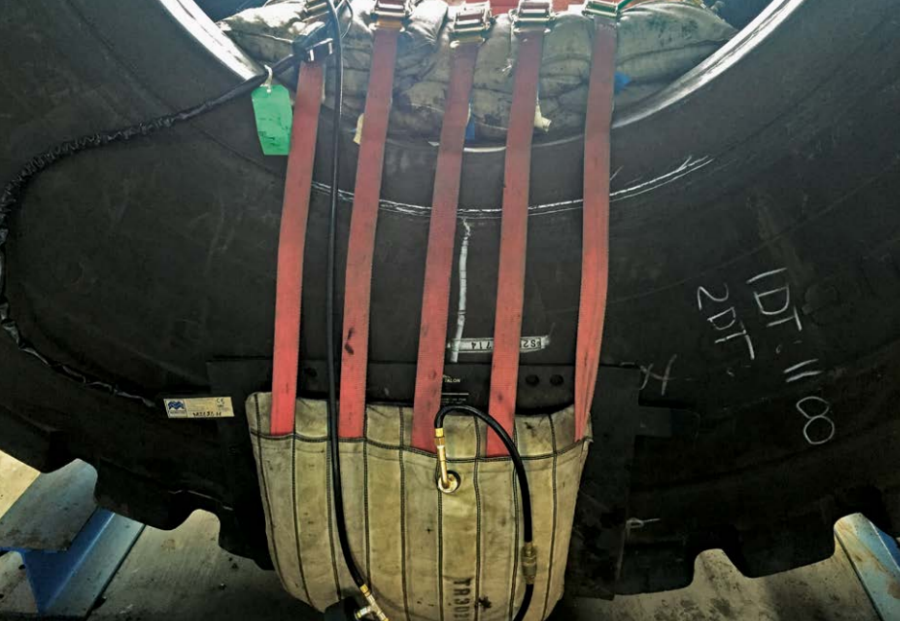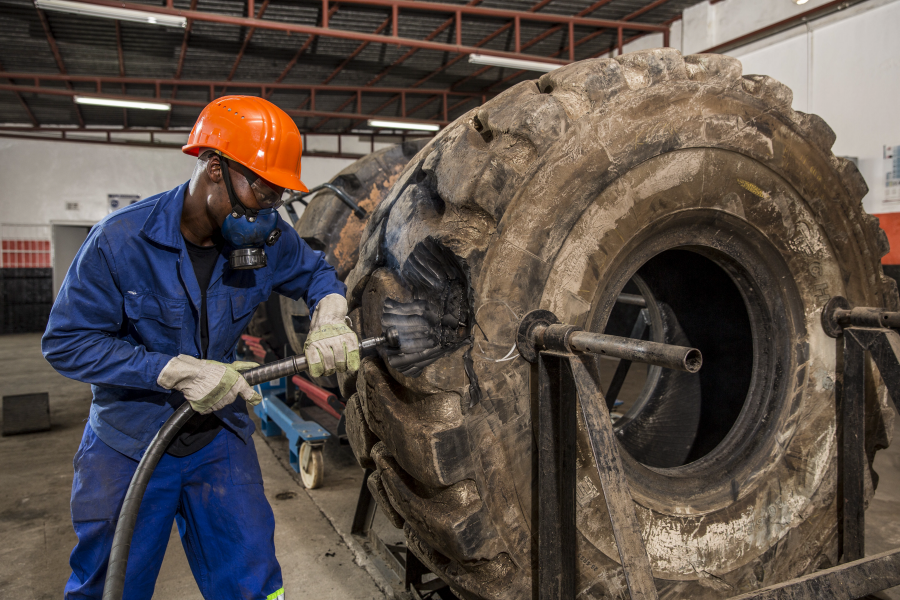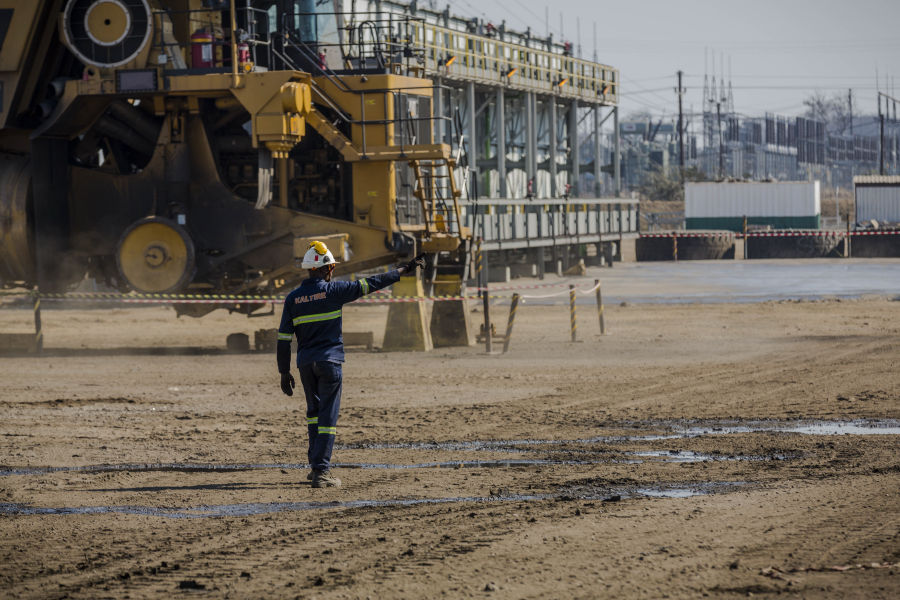Tires are a top five cost for a miner
Maintaining and replacing tires are expensive for miners, said Bob Bennett, Vice President of Operations for Kal Tire during an interview at last month's MINExpo.
Kal Tire is Canada's largest independent tire dealer and one of North America's largest commercial tire dealers. Kal Tire's Mining Tire Group operates at more than 150 mine sites across five continents.
Full interview transcribed for clarity.
MINING.COM: How do you service a tire?
Bob Bennett: It's quite a complex process in this day and age. We have trained technicians, specialized tools, specialized equipment, specialized processes, all aimed at effectively and safely changing tires for our customers.
We service some of the largest mining customers in Canada, in all commodities from coal to oil sands, from open-pit to underground.


Kal Tire's Fort McMurray operation.
MINING.COM: Isn't a servicing tires a traditional business where you just purchase a tire and dispose it when you don't need it anymore?
Bob Bennett: In the simplest sense, yes. But today tires are very expensive. They represent potentially the top five cost for a miner, so they require as much care and attention as you can so you can maximize the investment and get the longest life out of the tire.
MINING.COM: How do you do that?
Bob Bennett: Specialized training, attention to detail, focusing on maintaining proper air pressure, maintaining proper rotation and selecting the right tire, of course, at the very beginning. You have to make sure you have the right tire for the application, whether that's a long-haul or COP resistance.
MINING.COM: How do you monitor tire pressure remotely?
Bob Bennett: Kal Tire has its own tire-pressure monitoring system we've developed over several years. It's called True Tire Technology. Essentially it's a small, golf-ball-sized sensor that picks up the temperature and pressure contained within the tire. That information is transmitted to the truck and then from the receiver box transmitted off to wi-fi or some big home-based computer or even to your telephone. You can get real-time data on the contained pressure in the tires.
The key is to identify the tires that are going outside of the normal operating parameters, so you can stop tires from being damaged as a result of over-pressure or under-pressure or over-temperature.
MINING.COM: Can you talk about innovation within tire maintenance?
Bob Bennett: What we are faced with today is tires getting bigger and bigger, and equipment that has been getting larger and larger. Our employees are in a position where they need innovations to help make their job safer and more efficient. Heavy tools require lift assist, heavy tires require specialized tooling, and we talk to our team members and look for innovations that will help make their jobs easier and more productive.
MINING.COM: Where do the innovations come from?
Bob Bennett: Most of the ideas are coming directly from the workforce: the fellow on the floor changing the tires. He know what's wrong. He knows what causes him problems every day and our job is to work with them and help make their jobs easier.


Ultra Repair involves identifying earthmover tires with large injuries, and then inserting the Ultra Repair?,,? patch to give the tyre a robustness that restores the tyre's original strength, integrity and performance at a fraction of the cost of new tyres. Image from Kal Tire.
MINING.COM: What's Ultra Repair?
Bob Bennett: Ultra Repair is a proprietary technology developed in house by Kal Tire where we can take a tire, a very large ultra-class tire, that has been injured. We do an internal repair by replacing the steel core in the tire and putting back the tire into service and save the customer thousands of dollars because the tire would otherwise have been disposed.
MINING.COM: How durable is the repair after you put it on using Ultra Repair at a local facility?
Bob Bennett: In our experience a proper repair should last the life-cycle of the tire.


Ultra Repair facility in Zambia.
MINING.COM: Can you talk about some of the recycling services that you are doing?
Bob Bennett: On the recycling front we focus on two ideas: One is a low-tech existing technology of shredding tires. It's been around the tire business for many years. We've partnered with a company that has 35 years of experience across North America, and we've helped build a facility in Legal, north of Edmonton. The second avenue we are focused on is a new technology: Thermal conversion.
MINING.COM: Please explain the process?
Bob Bennett: Essentially we take the tire, we put into a vessel and by applying temperature and pressure. We reverse the tire back to its original components: oil, steel, carbon. There is a byproduct-ash comes out of the process. Steel is used for refineries. Carbon black we use as fuel for refineries or boilers, or other things that need a coal-type fuel. The diesel fuel that comes out can be refined and used, again in boilers and power generation that can be put back into the grid. It all depends on the nature of the environment you're working in.
MINING.COM: What is Gravity Assist?
Bob Bennett: Gravity Assist is a tool we've developed to aid our technicians when handling very heavy truck tools. For a very large truck, a tuck tool assembly can weigh up to 60 pounds. A large tire, wheel, can have about 72 nuts and bolts on it, so you can just imagine how much energy and effort it's put into that. So we are looking for a zero-g tool that can make that job easier for our employees, address the ergonomic issues, take some of the repetitive strain off the shoulders, reduce hassles and reduce injuries.
MINING.COM: You also have a tool for getting the air out of tires quickly.
Bob Bennett: We've identified an opportunity to bring in what's called a deflation tool to the market. Essentially we are going to create a vacuum and pull the air out of the tire rather than using the conventional pressure-release system. What it does is it cuts the deflation time in half. We think it's a very good solution for the customer, it drives efficiency, cost-savings, and it just makes the whole job run smoother.


Site service in Mozambique.